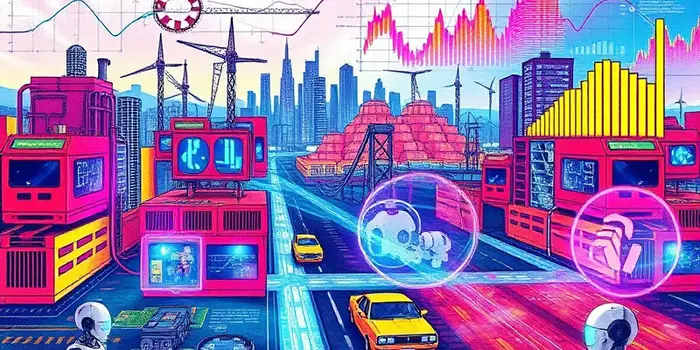
In an era defined by rapid innovation, technology has become the driving force behind transformative growth across every corner of the global economy. From automated factories to intelligent healthcare systems, these advancements are not only reshaping industries but also redefining how we live, work, and connect.
The technology sector is on a meteoric rise, with global IT spending will surpass $5.6 trillion in 2025. This unprecedented investment spans software development, cloud computing, and comprehensive data analytics platforms that empower organizations to make informed, strategic decisions.
At the heart of this surge lies artificial intelligence. According to industry forecasts, artificial intelligence could boost global GDP by $15.7 trillion by 2030, marking a 14% increase in economic output. China is poised to capture nearly half of this impact, while North America contributes a significant share, underscoring regional leadership in innovation.
Several core innovations are at the forefront of this transformation, each unlocking new possibilities for businesses and consumers alike:
These technologies often converge, creating synergistic solutions. For example, AI-powered analytics running in the cloud can monitor IoT devices in real time, while robust cybersecurity frameworks protect sensitive data flows.
Across industries, tailored applications of these technologies are driving both efficiency gains and entirely new business models. The table below highlights key impacts and data points:
These figures illustrate not only the scale of investment but also the speed at which sectors are adapting to new technological landscapes. Companies that embrace these tools are often rewarded with increased agility and market differentiation.
Geography plays a crucial role in shaping technology adoption patterns. North America and Europe lead in IT budgets, with nearly two-thirds of companies planning to accelerate digital initiatives in 2025. Meanwhile, Asia—particularly China—has set ambitious AI investment targets, aiming for global leadership by 2030 with over $150 billion dedicated to research and development.
This regional diversity underscores both the competitive pressures and collaborative opportunities that drive innovation ecosystems worldwide. Cross-border partnerships and talent exchanges become increasingly vital to sustaining momentum.
While the benefits of tech adoption are clear, organizations must navigate several critical challenges to realize their full potential:
Addressing these hurdles demands coordinated strategies that blend technological prowess with human-centric leadership. Companies that invest in secure, sustainable, and inclusive practices can turn challenges into lasting advantages.
Leading enterprises are already setting benchmarks for digital transformation success. Their initiatives offer blueprints for organizations of all sizes:
These real-world examples demonstrate how strategic technology deployment can yield both operational efficiencies and elevated customer experiences.
The trajectory of technology continues to point upward, fueled by relentless innovation and expanding use cases. In the semiconductor arena, demand for specialized AI chips is accelerating growth, while enterprise software evolves toward autonomous decision systems across sectors.
Investment levels in software and cloud services are expected to break new records as organizations seek to future-proof their operations. Simultaneously, educational institutions and corporate training programs are ramping up efforts to equip the workforce with skills in AI, cloud computing, and data analytics.
Ultimately, the symbiotic relationship between technology and industry promises a future defined by enhanced productivity, greater sustainability, and unprecedented human-machine collaboration. As advancements continue to unfold, stakeholders at every level—governments, corporations, and individuals—must embrace a mindset of continuous learning and adaptive resilience.
By leveraging emerging tools thoughtfully and inclusively, we can ensure that the next wave of innovation drives prosperity, well-being, and shared progress across the globe.
References













